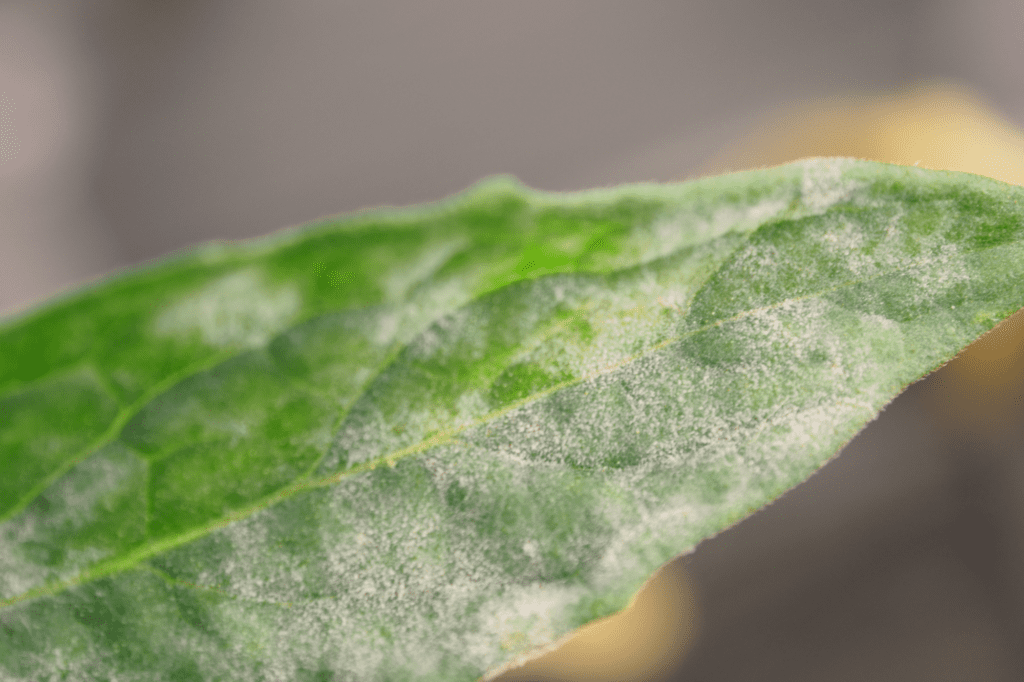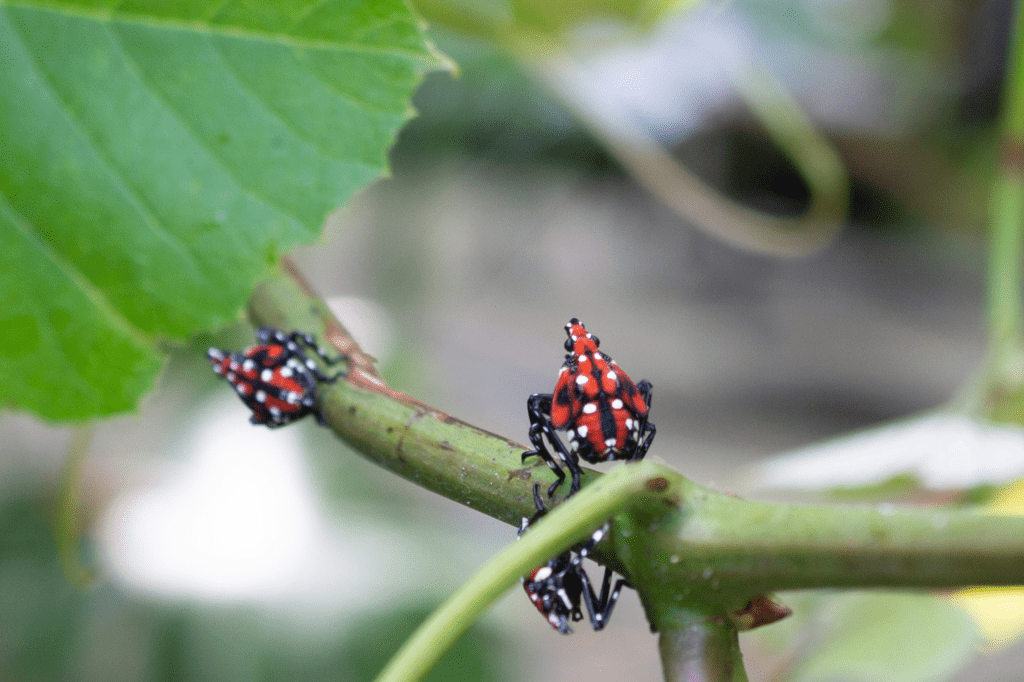Trumpet vines can be a beautiful addition to any garden, with their vibrant flowers and ability to attract hummingbirds and other pollinators. However, these plants can sometimes be affected by diseases or pests, resulting in leaf shriveling and diminished health.
To maintain beautiful, healthy trumpet vines, it’s important to understand the causes, symptoms, and treatment options for various issues that may arise.
Post Summary:
- Healthy trumpet vines require proper care and maintenance.
- Common diseases that can affect trumpet vines include powdery mildew and leaf spot.
- Pests that can infest trumpet vines include aphids, spider mites, and Japanese beetles.
Understanding Trumpet Vine Diseases
When it comes to maintaining the health of your trumpet vines, understanding common diseases and their symptoms is crucial. Knowing what to look for can help you catch issues early and take the appropriate steps to treat them.
Powdery Mildew
Powdery mildew is a fungal disease that appears as a white or gray powdery coating on the leaves, stems, and flowers of trumpet vines. It can cause leaves to curl and distort, and may lead to premature leaf drop.
This disease thrives in warm, humid conditions and can spread quickly in crowded or poorly ventilated areas. To prevent powdery mildew, avoid overhead watering and keep the foliage as dry as possible.
If powdery mildew is present, prune any affected leaves and increase air circulation around the plant. Organic or chemical fungicides may be necessary for severe cases.
Leaf Spot
Leaf spot is caused by a variety of fungal pathogens and can cause dark, circular lesions on the leaves of trumpet vines. These spots may eventually cause the leaves to yellow and drop prematurely.
Leaf spot can be prevented by avoiding overhead watering, removing any infected plant debris, and providing adequate spacing between plants. Fungal sprays or copper-based fungicides may be necessary for severe cases.
By understanding the symptoms, causes, and treatments for common trumpet vine diseases, you can take steps to protect your plants and ensure their long-term health.
Identifying Trumpet Vine Pests
If you notice your trumpet vine leaves shriveling up, it could be a sign of a pest infestation.
Here are some pests to look out for:
| Pest | Description | Damage |
|---|---|---|
| Aphids | Small, soft-bodied insects that cluster on leaves and stems. | Sucking sap from the plant, causing leaves to curl and yellow. |
| Spider mites | Tiny, eight-legged pests that spin webs. | Feeding on leaves causes yellowing and stippling. Severe infestations can lead to leaf drop. |
| Japanese beetles | Metallic green beetles that feed on leaves and flowers. | Leaves and flowers with holes. Heavy infestations can defoliate the plant. |
To confirm the presence of these pests, inspect the plant regularly and look for signs such as aphid clusters, webbing, or beetle damage.
If you suspect a pest infestation, take action promptly to prevent further damage to your trumpet vine.
Treating Trumpet Vine Diseases
If you notice any signs of disease in your trumpet vine, it’s important to take action quickly to prevent it from spreading and damaging the plant. Here are some effective treatments for common diseases:
| Disease | Treatment |
|---|---|
| Powdery mildew | Remove and dispose of infected leaves, increase air circulation around the plant, and apply a fungicide if necessary. |
| Leaf spot | Remove and dispose of infected leaves, improve the plant’s overall health and vigor, and apply a fungicide if necessary. |
It’s important to note that preventing diseases is key to maintaining the health of your trumpet vine. Regularly inspect your plant for signs of disease and maintain proper cultural practices, such as watering and pruning, to keep the plant strong and resilient.
If you prefer organic treatments, you can use neem oil or copper fungicides, which are effective in controlling fungal diseases. Always follow the instructions on the label and wear protective gear when applying any chemical treatments.
We recommend treating the plant during dry, calm weather to reduce the risk of damage to the plant or environment.
Managing Trumpet Vine Pests
If you want your trumpet vine to thrive, it is crucial to take preventative measures against pests. Here are a few tips to help you manage pests in your trumpet vine:
- Inspect your plants regularly: Look for signs of pests, such as yellowing leaves, curled leaves, and holes in the leaves. Early detection is key to effective pest control.
- Prune the affected areas: If you notice any damaged or infested areas, prune them immediately to prevent the pests from spreading.
- Use organic pest control methods: Neem oil, insecticidal soap, and garlic spray are all effective organic pest control methods. These are safe for humans, pets, and beneficial insects.
- Use chemical pest control methods: If the infestation is severe, you may need to use chemical pesticides. Be sure to follow the instructions on the label carefully and use protective gear when handling chemicals.
It is essential to maintain a clean and healthy garden environment to prevent pests from infesting your trumpet vine. Here are some additional tips to help you keep pests at bay:
- Clear debris: Fallen leaves, pruned branches, and other debris can harbor pests. Clear them away regularly.
- Keep the soil healthy: Healthy soil supports healthy plants. Use organic fertilizers and compost to enrich the soil and keep the plants healthy.
- Provide adequate water: Over-watering or under-watering can make your plants vulnerable to pests. Provide adequate water to keep the soil moist but not waterlogged.
- Use companion planting: Certain plants, such as marigolds, can repel pests. Plant them alongside your trumpet vine to help keep pests away.
By taking preventative measures and following these tips, you can help protect your trumpet vine from pests and ensure a healthy and thriving plant.
Additional Tips for Trumpet Vine Care
Keeping your trumpet vines healthy and vibrant requires attention to several factors. Proper care and maintenance will ensure that your plants thrive and remain free from diseases and pests. Here are some additional tips to keep in mind:
Provide Adequate Sunlight
Trumpet vines require full sun exposure to bloom profusely. Make sure to plant them in areas that receive at least 6 to 8 hours of direct sunlight each day. If you live in a hot climate, consider providing some shade during the hottest part of the day to prevent leaf burn.
Water Regularly
Trumpet vines need consistent and even moisture throughout the growing season. Water them deeply once a week, making sure to saturate the entire root system. Avoid watering them too frequently, as this can lead to root rot or other diseases.
Prune Properly
Pruning is a critical component of trumpet vine care. Regular pruning helps to promote healthy growth, prevent disease, and maintain the plant’s shape. Prune your trumpet vine in late winter or early spring, before new growth begins. Remove any dead, damaged, or diseased wood, and cut back any excessive growth to maintain a neat appearance.
Fertilize Regularly
Trumpet vines benefit from regular fertilization to promote healthy growth and abundant flowers. Use a balanced fertilizer every two to three months during the growing season, and follow the manufacturer’s instructions carefully to avoid over-fertilizing.
Protect From Winter Freeze
Trumpet vines can be damaged by freezing temperatures, especially in colder climates. Protect your plants from winter freeze by covering them with mulch or other protective material. This will help to insulate the roots and protect the plant from extreme cold.
Following these tips will ensure that your trumpet vines remain healthy and vibrant year after year. With proper care and maintenance, your plants will thrive and provide a beautiful focal point for your garden.
Troubleshooting Common Issues
Despite your best efforts, your trumpet vine may encounter some setbacks along the way. Identifying and troubleshooting problems early on can help you get back on track to maintaining a healthy and vibrant plant. Here are some common issues you may encounter:
Stunted Growth
If your trumpet vine is experiencing stunted growth, it may be due to poor soil quality or inadequate sunlight. Ensure that your plant is receiving at least six hours of direct sunlight per day and that the soil is well-draining and nutrient-rich. Consider adding compost or organic fertilizer to the soil to promote healthy growth.
Poor Flowering
If your trumpet vine is not producing flowers, it may be due to a lack of sunlight or pruning. Ensure that your plant is receiving sufficient sunlight and that any nearby foliage or structures are not blocking its access to light. Additionally, pruning your trumpet vine in late winter or early spring can promote new growth and encourage the development of flowers in the summer.
Yellowing Leaves
If your trumpet vine’s leaves are turning yellow, it may be due to overwatering or a nutrient deficiency. Ensure that your plant is not sitting in standing water and that the soil is well-draining. Consider adding a balanced fertilizer to the soil to promote healthy foliage growth.
Pro tip: Remember to always read product labels carefully and follow instructions when using fertilizers or pesticides on your trumpet vine.
By addressing these common issues and taking proactive measures to maintain the health of your trumpet vine, you can enjoy its beauty and vibrancy for years to come.
Conclusion
Congratulations on taking the first step towards maintaining healthy and vibrant trumpet vines. By understanding the common diseases and pests that can affect your plants, you can take proactive measures to keep them free from leaf shriveling and other damage.
Remember, early detection is key to effective treatment. Regular inspections and proper plant care will go a long way in preventing issues from arising in the first place.
Keep Up the Good Work
By implementing the tips and strategies outlined in this article, you’ll be well on your way to enjoying a beautiful and healthy trumpet vine. Don’t be discouraged if you encounter challenges along the way – with a little patience and persistence, you can overcome any issue that comes your way.
Thank you for taking the time to read this guide. Your trumpet vines will thank you for it!
FAQ
Q: How do I treat trumpet vines affected by diseases or bugs?
A: To treat trumpet vines affected by diseases or bugs, it is important to first identify the specific issue. Common diseases that can affect trumpet vines include powdery mildew and leaf spot, while pests like aphids, spider mites, and Japanese beetles can also cause damage. Once the problem is identified, you can use cultural practices such as proper watering and pruning, as well as organic or chemical treatments, to combat the issue effectively.
Q: What are some common diseases that can affect trumpet vines?
A: Common diseases that can affect trumpet vines include powdery mildew and leaf spot. Powdery mildew appears as a white, powdery coating on the leaves, while leaf spot causes dark, circular spots on the foliage. Both diseases can lead to leaf shriveling and overall decline of the plant if left untreated.
Q: How can I identify pests that may infest my trumpet vines?
A: Some common pests that may infest trumpet vines include aphids, spider mites, and Japanese beetles. Aphids are small insects that cluster on the leaves and stems, sucking the sap from the plant. Spider mites are tiny pests that create fine webbing on the leaves and cause discoloration. Japanese beetles are metallic green insects that skeletonize the leaves. Regular inspections of your trumpet vines can help identify the presence of these pests.
Q: What can I do to treat diseases in my trumpet vines?
A: To treat diseases in your trumpet vines, it is important to practice good cultural care. This includes proper watering, pruning infected parts, and improving air circulation around the plants. Organic treatments such as neem oil or copper fungicides can be used, and in severe cases, chemical treatments may be necessary. Additionally, ensuring overall plant health through regular fertilization and proper soil conditions is crucial.
Q: How can I manage pests in my trumpet vines?
A: Managing pests in your trumpet vines starts with prevention. Regular inspections to identify pests early on is important. Maintaining a clean garden environment, including removing debris and weeds, can also help prevent infestations. For organic pest control, options like insecticidal soaps or horticultural oils can be used. Chemical treatments may be necessary for severe infestations, but it is important to follow instructions and use them responsibly.
Q: What are some additional tips for caring for trumpet vines?
A: When caring for trumpet vines, it is important to prune them properly to encourage healthy growth and flowering. Providing adequate sunlight and ensuring well-drained soil are also crucial for their success. Regular fertilization with a balanced fertilizer can help promote vibrant blooms. Remember to water your trumpet vines regularly, especially during dry spells, and monitor for any signs of stress or disease.
Q: How can I troubleshoot common issues with my trumpet vines?
A: If you encounter issues with your trumpet vines such as stunted growth, poor flowering, or yellowing leaves, there are several troubleshooting steps you can take. Ensure the plants are receiving enough sunlight and water, and check for any signs of pests or diseases. Adjusting the soil pH or providing additional nutrients through fertilization may also help. Pruning any dead or damaged parts of the plant can promote new growth.











